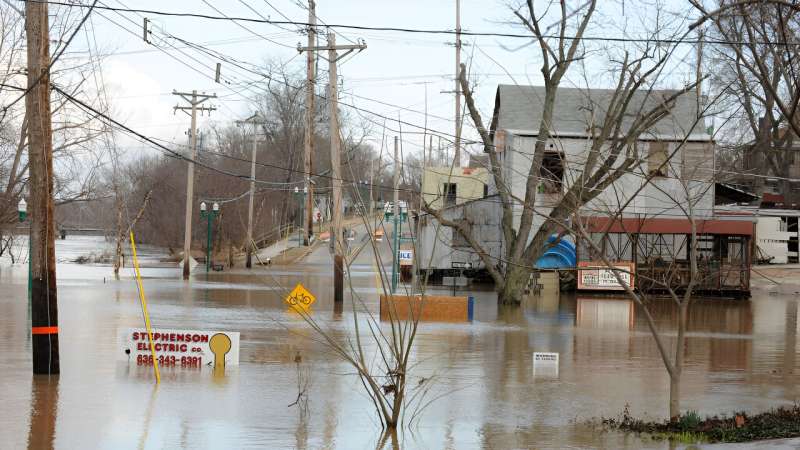This article has been reviewed according to Science X's editorial process and policies. Editors have highlighted the following attributes while ensuring the content's credibility:
fact-checked
peer-reviewed publication
trusted source
proofread
Climate change likely to drive more floods in some parts of the US, fewer in others

By breaking down flooding analysis into its main physical mechanisms, researchers at Princeton have projected that climate change will markedly impact river basin flooding across the United States during the 21st century.
In an article titled "Higher emissions scenarios lead to more extreme flooding in the United States," published Jan. 3 in Nature Communications, the researchers found that projected variations in temperature and precipitation are expected to drive increased flooding in the Northeast and Southeast, particularly along the Eastern Seaboard. Flooding will generally decrease in the Southwest and the Northern Great Plains in areas including Montana and the Dakotas.
Corresponding author Gabriele Villarini said that by basing projections on mechanisms such as temperature and precipitation, the researchers took a new approach to flood analysis. He said most analyses examine the historical record and look for trends in data moving through the present and into the near future. Planners often refer to floods using the historical record, talking about a 100-year flood or a 1,000-year flood as a measure of severity. But Villarini said this type of analysis is insufficient during a changing climate.
"When we design protective structures, we design for the future, not for the past," said Villarini, a professor of civil and environmental engineering and Princeton's High Meadows Environmental Institute. "If all you do is look at the past and assume the future is just the same as what happened before, you will run into potential issues because of climate change."
Most analyses using the historical record have found no statistically significant trend toward greater, or lesser, flooding in recent decades, the researchers said. But they said this is an issue that is likely dependent upon the extreme nature of these events. Extreme events are, by definition, rare, and there is a lot of noise in the observational data, especially if dealing with short records. It is possible that a signal of change is buried in the noise, and it would be able to be detected only over long temporal horizons or when it increases in magnitude.
Therefore, this small number, combined with the complexity of the physical properties of a typical flood event, makes it extremely difficult to detect changes in flooding by relying on the historical record alone, even when a signal of change is indeed present in the data.
Rather than rely only on the record, the researchers focused on understanding the processes that led to the year-to-year changes in flooding, and broke causes of flooding down into the two most important climate factors: seasonal temperature and precipitation. The researchers did extensive modeling on how each seasonal component affected flooding. They then factored each component into a statistical flood model using data for both concurrent and lagged seasons to account for antecedent conditions such as soil moisture conditions and snowmelt.
The researchers checked their models against available historical flood discharge data and learned that they were able to successfully attribute the observed changes in flooding to simple seasonal climate factors.
After validating the flooding model and the suitability of global climate models in reproducing the past, the researchers then turned to future events. They chose different scenarios for climate change-driven precipitation and temperature across the United States and used those to estimate changes in regional flooding.
The picture that arises from their analyses is one in which the signal of change becomes stronger and more detectable for increasing greenhouse gas emissions, pointing to the impacts of anthropogenic climate change on this hazard. Moreover, their results highlight that we should not use the lack of a detected signal of change in the observational records as evidence of lack of change in the future, and that climate change should be accounted for in the design of the future infrastructure.
Villarini said he hoped the work would help engineers and planners prepare for different conditions in the future. He said government leaders will have to make decisions on how to spend effort and money coping with future conditions likely to be more challenging than those experienced today.
More information: Hanbeen Kim et al, Higher emissions scenarios lead to more extreme flooding in the United States, Nature Communications (2024). DOI: 10.1038/s41467-023-44415-4
Journal information: Nature Communications
Provided by Princeton University





















